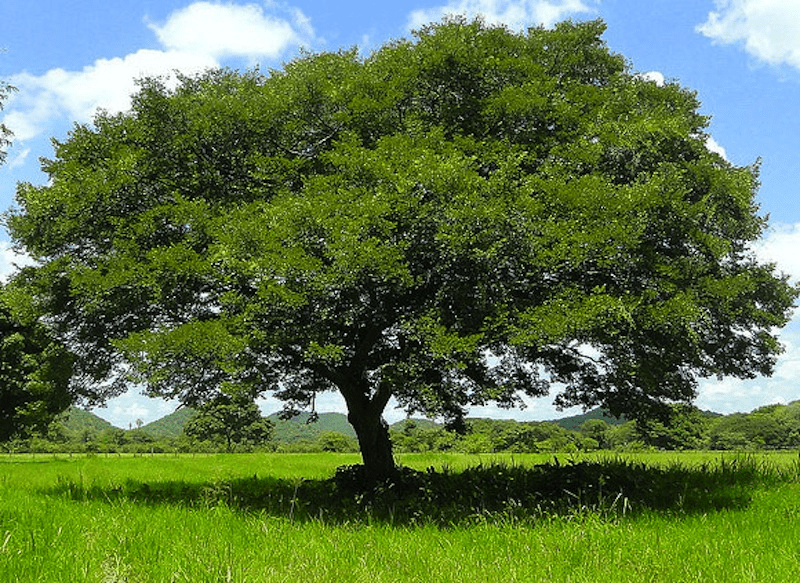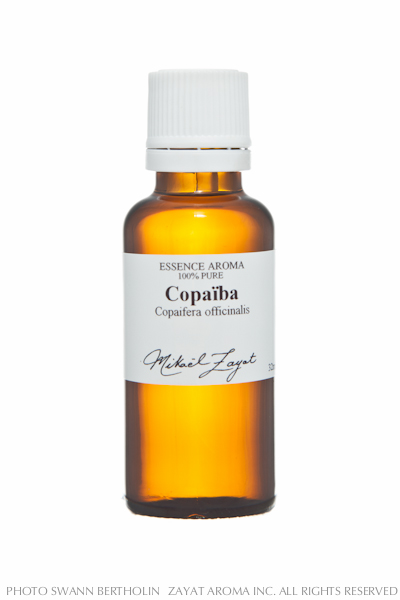Copaïba,
Copaïba, Brazil
100% pure and natural essential oil
Botanical name: Copaifera officinalis
Plant Part: oleoresin
Extraction method: cold extract
Origin: Brazil
| 6.00$ |
Free shipping for online orders of more than 69$, before taxes, within Canada.
(View the maximum available formats for free delivery)
Cautions and warnings:
Do not use pure essential oils. Essential oils are diluted in a vegetable oil when applied to the skin. Carry out a skin tolerance test in the crook of your elbow and wait 48 hours before using the oil on the skin. Do not use the essential oil if you notice a reaction such as redness, itching or stinging.
Keep out of reach of children.
If accidental ingestion occurs, seek urgent medical attention or contact a Poison Control Center.
Avoid contact with eyes and mucous membranes. Essential oils should not be applied to the eyes, the eye contour area, neither into the ears. In case of contact, apply a plenty of vegetable oil and take promptly medical advice.
If symptoms persist or worsen when using essential oil, consult a health care practitioner.
If you have epilepsy or asthma, consult a health care practitioner prior to use.
Avoid exposure of applied area(s) to the sun.
Contraindications:
If you are pregnant or breastfeeding, do not use essential oils.
Known adverse reactions:
If you experience nausea, dizziness, headache or an allergic reaction, discontinue use.
Storage:
Store in airtight, light-resistant container at room temperature.
Responsibility:
The information contained on our site is presented purely for information purposes and cannot, in any case, bind the responsibility of the company. In no way does this information constitute a recommendation for preventive or curative treatment, prescription or diagnosis, nor should it be considered as such.
 Words by Anny Schneider
Words by Anny Schneider
Powerful analgesic, anti-inflammatory and healing, the essential oil of Copaïba is very useful in case of muscle or joint pain.
Diluted in a vegetable oil, it can be applied in the region of the kidneys and bladder to relieve infections in this region.
General tonic, applied in the adrenal area, it energizes in times of great fatigue.
Origin of this essential oil
This Copaiba essential oil from Brazil is a cold extract from the oleoresin of the tree.
Properties
General tonic, it energizes in times of great fatigue.
Cautions
Keep away from children, air, heat and light.More information
The copahier (or Copahu balsam, Copahu balsam, copahu, copayer, cabismo, kupa'y and even copaïba), is a tree native to South America, especially Brazil and its best known nickname is "diesel tree ".
Indeed, it is used to produce terpene hydrocarbons in its wood and leaves, which has sparked interest in the search for renewable energy sources.
An acre of 100 mature trees could produce the equivalent of 25 barrels of oil per year according to some studies.
The main component of the oil is copaiba (15%), an oleoresin which is useful in the production of petroleum products such as lacquers and can be used as biodiesel.
After filtration, this oil can be used in the engine of an ordinary diesel automobile.
The wood is used for carpentry and its flowers are very attractive to honey insects.
On another area that interests us more, the natives of Amazonia use the oil of the tree as a traditional medicine, mainly as an expectorant and antiseptic, but also for the treatment of skin diseases such as eczema and dermatosis. .
The most recent studies attempt to prove that copaiba essential oil has an effect on prostatitis, urogenital infections and polyarthritis but may present risks of liver toxicity. (PMID 28322470)
It has also been discovered recently that this oil is extremely good as a healing agent, thus increasing the value of the oil.
The essential oil is obtained from the resin exuding from the trunk and branches.
Main components of essential oil:
- Sesquiterpenes:
- beta-caryophyllene (62.6%),
- alpha-humulene (7.3%),
- alpha-copaene (3.8%),
- beta-biabolene and beta-selinene (3%),
- germacrene D (2.5%)
For further information about this product or to inquire about larger quantities, please send us an email and we will get back to you as soon as possible.
The availability and price of this product may vary without prior notice, if for some reason the quantity you have requested is currently unavailable, we will contact you shortly to discuss the best options to fulfill your needs.
References
* L’aromathérapie énergétique - Lydia Bosson
* L’aromathérapie exactement - Pierre Franchomme, Roger Jolis et Daniel Pénoël
* L’aromathérapie, Se soigner par les huiles essentielles - Dr Valnet
Log in
Subscribe to our newsletter here!
All rights reserved © 2024 - ZAYAT AROMA
Terms & conditions | Security & privacy







